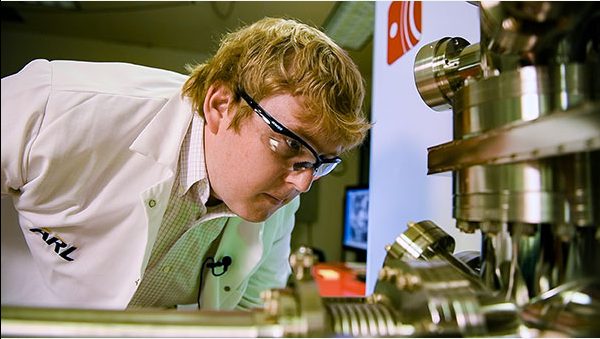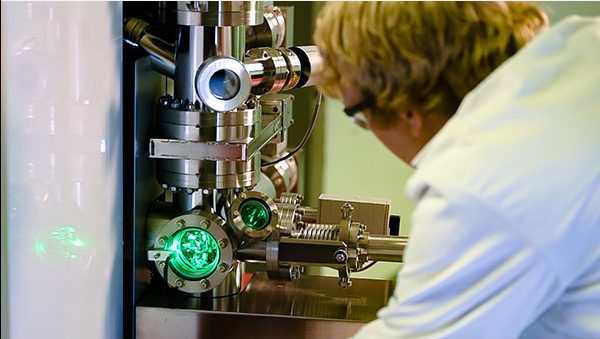Material scientists from the U.S. Army Research Laboratory (ARL) at Aberdeen Proving Ground, Maryland, are analyzing metal and ceramic specimens at the atomic level using 3D imaging atom probe technology. This analysis aims to evaluate the effectiveness of materials used for body armor on future army soldiers.
The work includes studying metal alloys that have undergone processing with additive manufacturing.
In collaboration with Lehigh University in Pennsylvania, the University of Alabama, and Texas A&M University, the army scientists also hope to develop stronger, more heat-resistant materials for future soldiers.
“When you see things no other human has ever seen before, it’s very cool to think that I’m helping to push the envelope of new modern materials science, which then obviously is used for the Army,” said Dr. Chad Hornbuckle, Materials Scientist at ARL’s Weapons and Materials Research Directorate.
“Every time we run a new material we think about how we can help the Soldier with this new discovery.”

The Cameca 3D atom probe
Samples of metal and ceramic a thousand times smaller than the end of a strand of human hair are placed within a Cameca 3D Atom Probe to better understand its material structure during chemical experimentation. The samples are prepared for analysis by creating sharp tips through sandblasting, or CNC milling. Then, the chemical element gallium – a metal alloy that remains liquid at room temperature – is applied to the samples using a dual beam scanning electron microscope. Following this, the samples are carefully inserted into the atom probe.
“The atom probe gives us a 3D reconstruction at the atomic level,” explained Dr. Hornbuckle, who specializes in microstructural characterization using electron microscopes and atom probe tomography (APT). “When you see the reconstruction that’s made up of millions of dots, the dots are actually individual atoms.”
In an ultra-cold vacuum within the atom probe, lasers ionize the atoms on the small tip causing the individual ions causing field evaporation – the vaporization of protruding surface atoms produced by an electric field.
The evaporated ions are analyzed and identified using a 3D model at a near-atomic spatial resolution which allows scientists to accurately decipher varying types of atoms and its location within the material.

Advanced material research
Dr. Denise Yin, a postdoctoral fellow at the lab and graduate of Lehigh University used the 3D atom probe during electrodeposition – a process that creates thin metal coatings. “We were electrodepositing copper in a magnetic field and we found a chemical phase using the atom probe that didn’t otherwise show up in conventional electrodeposition.
Furthermore, with the limited number of atom probes and experienced material scientists, universities are also bringing their own samples for analysis. Dr. Hornbuckle added:
“I have analyzed a few nickel-titanium alloys that had been 3D printed. They noticed some nanoscale precipitates within the 3D printed materials but were unable to identify them with their TEM [Transmission electron microscopy]. I am trying to determine the chemistry of the phase using the atom probe, which should help to identify it.”
These partnerships will enable mutual access for Army and university laboratory equipment. The knowledge gained through this research will also be applied to current Army problems as well as in the development of future military armor materials.
ARL researchers previously discovered that a novel aluminum alloy reacts with water to produce hydrogen, which led to the creation of 3D printed rocket fuel.
For more of the latest 3D printing news subscribe to the 3D Printing Industry newsletter and follow us on Twitter, and Facebook.
Pursuing a career in additive manufacturing or looking for skilled individuals in the field? Search and post 3D Printing Jobs for opportunities and new talent across engineering, marketing, sales and more.
Featured image shows full 3D material tip imaging in atom probe tomography (APT). Image via ARL.


